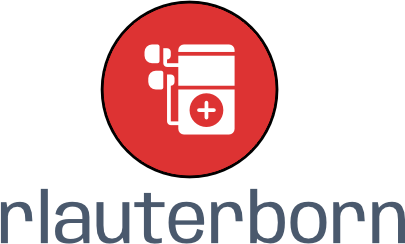In the fast-paced world of digital marketing, staying ahead of the competition requires more than just creativity and innovation—it demands efficiency. Marketing automation is the key to achieving this efficiency, allowing businesses to streamline their campaigns, personalize customer interactions, and ultimately drive growth. As we move into 2024, the landscape of marketing automation continues to evolve, offering new tools and techniques that can significantly enhance your marketing efforts. In this post, we’ll explore the top marketing automation tools and techniques for 2024 and how they can benefit your business.
1. Why Marketing Automation Is Essential in 2024
Why It Matters: In today’s competitive market, businesses need to engage customers with personalized, timely, and relevant content. Marketing automation makes this possible by automating repetitive tasks, managing complex campaigns, and providing actionable insights.
Key Benefits:
- Efficiency: Automates repetitive tasks like email campaigns, social media posts, and data analysis, freeing up time for strategic initiatives.
- Personalization: Delivers tailored content to customers based on their behavior, preferences, and engagement history.
- Scalability: Enables businesses to manage and scale their marketing efforts without a proportional increase in resources.
- Data-Driven Decisions: Provides in-depth analytics that help refine strategies and improve ROI.
2. Top Marketing Automation Tools for 2024

Why It Matters: Choosing the right marketing automation tools can make a significant difference in the effectiveness of your campaigns. Here are some of the top tools to consider in 2024:
- HubSpot: A comprehensive marketing, sales, and service software that offers a wide range of automation features, including email marketing, lead management, and analytics.
- ActiveCampaign: Known for its powerful automation capabilities, ActiveCampaign excels in email marketing, CRM integration, and customer segmentation.
- Marketo: Ideal for large enterprises, Marketo provides advanced features like lead nurturing, customer journey mapping, and multi-channel marketing automation.
- Mailchimp: A popular choice for small to mid-sized businesses, Mailchimp offers easy-to-use automation tools for email marketing, social media, and more.
- Pardot: Salesforce’s B2B marketing automation solution focuses on lead generation, nurturing, and reporting, making it a great choice for businesses using Salesforce CRM.
- Sendinblue: A versatile platform offering email marketing, SMS campaigns, and chat functionalities, Sendinblue is known for its user-friendly interface and affordability.
3. Emerging Automation Techniques for 2024
Why It Matters: Staying updated with the latest automation techniques can give your business a competitive edge. Here are some techniques that are gaining traction in 2024:
- AI-Driven Personalization: Leveraging artificial intelligence to analyze customer data and deliver highly personalized content across various channels.
- Omni-Channel Marketing Automation: Integrating multiple channels (email, social media, SMS, etc.) to create a seamless customer experience, regardless of where they interact with your brand.
- Predictive Analytics: Using data to predict future customer behaviors and trends, enabling more targeted and effective marketing strategies.
- Automated Content Creation: Utilizing AI tools like GPT-based models to generate content that resonates with your audience, saving time and resources.
- Customer Journey Mapping: Automating the process of mapping out and optimizing the customer journey, ensuring that each touchpoint is tailored to drive conversions.
4. Best Practices for Implementing Marketing Automation
Why It Matters: Successful marketing automation requires careful planning and execution. Here are some best practices to follow in 2024:
- Set Clear Goals: Define what you want to achieve with marketing automation, whether it’s increasing lead conversion, improving customer retention, or enhancing brand awareness.
- Segment Your Audience: Use data to segment your audience based on demographics, behavior, and preferences, allowing for more personalized and relevant communication.
- Focus on Quality Content: Even with automation, the quality of your content is crucial. Ensure that automated messages are well-crafted and provide value to the recipient.
- Test and Optimize: Continuously monitor the performance of your automated campaigns, conducting A/B tests and making adjustments to improve outcomes.
- Integrate with CRM: Ensure that your marketing automation tools are integrated with your CRM system, allowing for seamless data sharing and a unified view of your customers.
5. Measuring the Success of Your Marketing Automation
Why It Matters: To justify your investment in marketing automation, you need to measure its effectiveness. Here’s how to evaluate your success:
- Key Metrics: Track metrics such as open rates, click-through rates, conversion rates, and ROI to gauge the performance of your automated campaigns.
- Customer Engagement: Measure how well your automation efforts are engaging customers across different touchpoints.
- Lead Generation and Nurturing: Analyze how effectively your automation tools are generating and nurturing leads, and how many of these leads convert into paying customers.
- Sales Impact: Assess the direct impact of your marketing automation on sales and revenue growth.
Conclusion
Marketing automation is no longer a luxury—it’s a necessity for businesses looking to scale their efforts, engage customers effectively, and stay competitive in 2024. By leveraging the right tools and techniques, you can streamline your marketing processes, deliver personalized experiences, and drive significant business growth. Whether you’re new to marketing automation or looking to refine your existing strategy, the insights and best practices shared in this post will help you make the most of this powerful technology.




